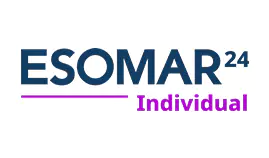
With every upgrade, AI is slowly becoming a part of our lives and work. The concept of human-AI collaboration is changing work culture, adding new dimensions to innovation and efficiency. This blog will highlight the future of human-AI collaboration and how it might shape our world.
Human-AI Collaboration
It is based on the collaboration and synergy among human competencies and artificial intelligence to achieve common objectives. This differs from using AI as a tool, whereby it collaborates with humans in making decisions and solving problems. By leveraging Artificial Intelligence Development Services, organisations can effectively integrate AI into their processes to enhance this collaboration.
For instance, AI systems in healthcare analyse medical data and suggest treatment options, while human doctors apply judgment and experience to make final decisions. Regarding finance, AI detects fraudulent transactions by processing large volumes of data that financial analysts interpret and act upon.
Behind all human-AI collaboration is one philosophical underpinning: mutuality and reinforcement—a philosophy wherein AI and humans play to each other's strengths and thus produce more effective outcomes than either could manage alone.
Benefits of Human-AI Collaboration
Integrating AI with human expertise offers several significant advantages:
Enhanced Efficiency
AI can undertake very repetitive and mundane tasks with ease, freeing the human mind to work on higher functions that are difficult and creative. Examples include routine data entry, which frees up human employees for strategic planning. In the process, increased efficiency hastens throughput and diminishes the chances of human error during boring tasks.
Moreover, AI clears the mind when problem-solving skills are needed, driving innovation within the team since the burden of repetitive chores is taken off one's shoulders. All this means that businesses can build a more active and motivated team that handles challenges and new opportunities more effectively.
Improved Decision-Making
AI can analyse big datasets faster and more correctly, providing insight to support human decisions. While processing vast chunks of information, AI detects patterns and trends in ways that may be difficult for the naked eye. This capability allows businesses to make informed decisions, optimise their processes, and accurately predict future trends. More importantly, the predictive analytics capability of AI could be advantageous for strategising since it will enable better forecasting of what will happen based on past data. This proactive approach lets organisations apportion resources better and allows them to change course fast enough if there is a need for a shift in market-driven priorities.
Innovation and Creativity
AI applies innovation in ideas and problem-solving methods by seeking patterns and creating solutions that individuals may not have considered. For instance, AI-powered design tools may create novel product designs or marketing strategies based on emerging trends and data. Such collaboration provides an enabling environment for creativity, where AI's strong analytical abilities blend with human ingenuity to pioneer innovative innovations.
Personalisation
AI enables highly personalised experiences in marketing, customer service, and product recommendations. It can tailor interactions to meet particular needs by analysing individual preferences and behaviours. For example, AI algorithms can recommend products according to a user's viewing history, while intelligent chatbots offer personalised customer support. This level of personalisation will enhance customer satisfaction and drive engagement.
Enhanced Learning and Development
AI-powered tools can extend continuous learning and development by providing personalised training and resources. For instance, adaptive learning platforms leverage AI to adjust content in accordance with each individual's learning styles and progress to help employees build new skills more effectively.
Risk Management
AI helps analyse data for any possible threats or anomalies. For example, in cybersecurity, AI-powered systems point out patterns that might be unusual and suspected of causing a breach in security. Because it constantly learns from new data, AI adapts to evolving threats, thus being more accurate and effective over time. This proactive risk management enhances the security posture and instils more trust among customers and stakeholders in an organisation's ability to protect sensitive information.
Scalability and Flexibility
Scalability ensures that AI solutions may consistently maintain scalable performances in workloads and harmonise with changes in business requirements. This scalability allows an organisation to face growths and oscillations in demand without losing quality or efficiency. As businesses continue to change, AI can adapt to take in fresh data sources and innovative technologies that make sure operations remain smooth and efficient. This way, an organisation can keep pace with the continuously competitive and dynamic marketplace.
The Future of Human-AI Partnerships
Indeed, several new trends and technologies are coming up in this area, so the future of collaboration between humans and AI is looking bright.
- Emerging Technologies: AI development includes advanced machine learning models and natural language processing, which will further enable human-AI interaction and capabilities.
- Workplace Evolution: Job roles and required skills are changing with the continuous evolution of AI. In the future, workplace emphasis will be shifted to AI-related skills and the capability of working with advanced technologies.
- More competent Human-AI Interaction: Innovations are afoot to make interactions with these AI systems much more accessible. Interfaces will be more intuitive, collaboration tools will be friendlier, and leveraging AI effectively within teams will be more accessible.
- Long-term vision: The trend in human-AI collaboration points toward a future where AI will be at the centre of progress and solutions to complex problems. Acceptance of the partnerships will unlock new opportunities and ensure long-term success.
Conclusion
Human-AI collaboration can reshape the work routine and create tremendous opportunities to boost efficiency, decision-making, and creativity. With continuous advancement in AI, integration with human workflow would be the key to truly leveraging its effectiveness.
While teams leverage AI's strong analytical power, they apply their unique human insights and creative know-how to solve complex problems. When the environment in an organisation is suitable for both humans and AI to maximise their strengths, it should be able to drive innovation and ultimately improve their performance. Besides, ongoing training and open communication will be necessary to empower employees with total capability in working with AI technologies.






